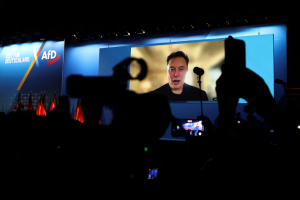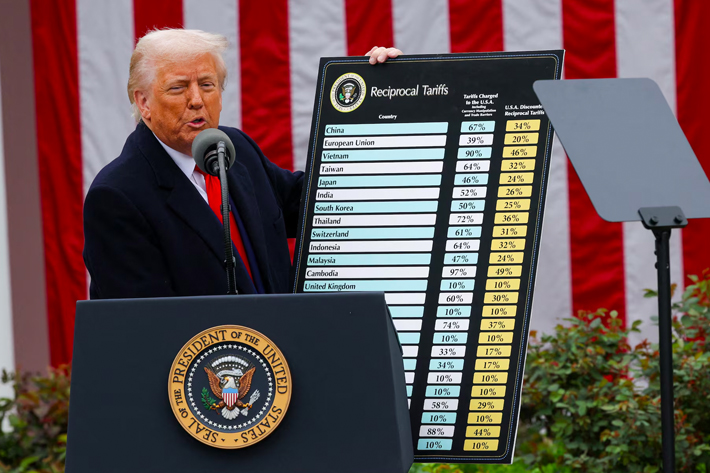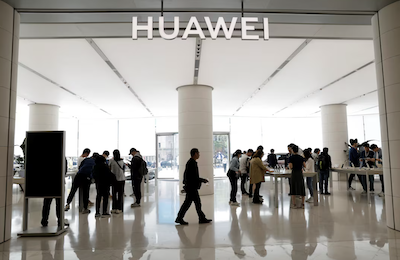Microsoft founder and billionaire Bill Gates is backing a newly-launched non-profit that aims to bring standardisation to the carbon dioxide removal (CDR) industry.
Gates’ climate investment firm, Breakthrough Energy Ventures, has backed the formation of the Carbon Removal Standards Initiative (CRSI), that aims to help policymakers quantify standards for future CDR policies in a “rigorous, science-based” manner.
“Carbon removal is a public good, and carbon removal standards will largely be set by policy and regulation,” CRSI founder Anu Khan said, when its launch was announced on Tuesday.
Also on AF: A European Push Could Help India Fill Carbon Removal Gaps
“CDR is fundamentally a tool for climate justice. Justice requires accountability and justice in carbon removal requires rigorously counting the carbon,” said Khan, who has previously worked with climate NGO Carbon180.
CRSI will have “no financial stake in the sale of credits or the growth of the carbon market,” she added.
The move is significant given estimates that the carbon removal industry could earn up to $100 billion a year by 2030, but remains plagued by scepticism.
Climate watchers worry that energy and carbon-intensive industries — such as oil, gas and electricity — could use emerging climate technology such as CDR to sidestep goals to cut their emissions.
But the UN’s Intergovernmental Panel on Climate Change has noted that carbon removal is “necessary” for the globe to reach net negative CO2 emissions.
According to the Oxford University-backed State of Carbon Dioxide Removal report this year, the world needs to remove between 7–9 billion tonnes of carbon dioxide per year from the atmosphere by 2050 to avoid breaching the 1.5°C global warming threshold.
But current CDR projects are only removing 2 billion tons of CO2 per year.
Why is standardisation needed?
The biggest impediment to more vigorous carbon removal efforts has been a lack of funds necessary to boost the industry. Common CDR methods — like biochar, enhanced rock weathering, direct air capture (DAC) and bioenergy with carbon capture and storage (BECCS) — require extensive and often costly infrastructure.
Effective standardisation could give a big boost to the inflow of funds to CDR projects, given the lack of transparency that has plagued the carbon industry for years.
Tools used so far — such as carbon credits for emission offsetting — now face increasing scrutiny and criticism amid concerns that they have become another form of ‘greenwashing’ for carbon intensive firms.
Just this week, an industry watchdog announced that nearly a third of carbon credits failed to meet its ‘high integrity’ criteria, casting doubt on their effectiveness in helping to cut emissions.
Using carbon to make fuel and butter
Bill Gates, meanwhile, has remained an early proponent of carbon removal, committing investment worth millions into the industry as recently as last month.
In July, his Microsoft made a record deal to buy 500,000 metric tons of carbon dioxide removal (CDR) credits from US oil producer Occidental Petroleum for an undisclosed amount. Those credits could cost $400-$630 per tonne of carbon, according to a report by the Financial Times.
Early this year, a CDR startup backed by Gates also went online in Arkansas with a goal of removing 15,000 metric tons of carbon dioxide from the atmosphere by the end of the year.
The billionaire has also backed startups that are using captured carbon to produce fuel and even butter.
But those efforts remain shadowed by Microsoft’s own emissions.
The tech giant has set a goal to become carbon negative by 2030 but said in May that its emissions had jumped by 30% since 2020, as it scaled up its data centres to support its artificial intelligence (AI) push.
- Vishakha Saxena
Also read:
Memory Breakthrough Could Slash AI Energy Use – LS
China to Set Emission Quotas for Industries, Economic Planners
Carbon Offsets Mostly ‘Ineffective’, Slow Net Zero Shift – FT
Methane Emissions Surge, Fuelling Climate Fears – Guardian
China, India Ask Rich Nations For ‘Trillions’ in Climate Finance
Zero-Carbon Breakthrough For Industry’s Dirty Businesses – NA
China Turns to Carbon Capture, Biomass For Coal Power Emissions
Climate Crisis Has Cost China Billions Already This Year
























